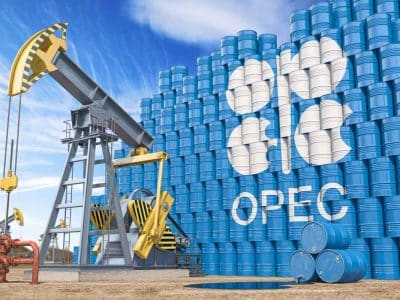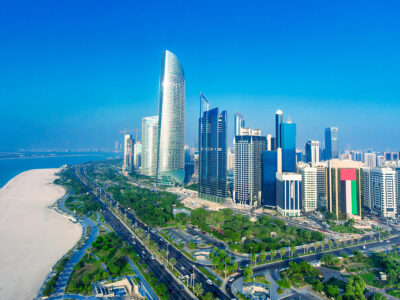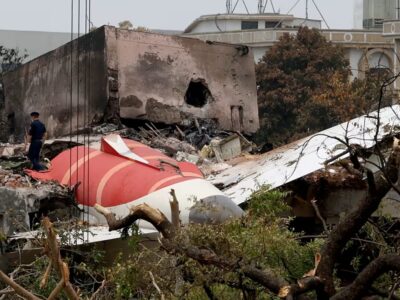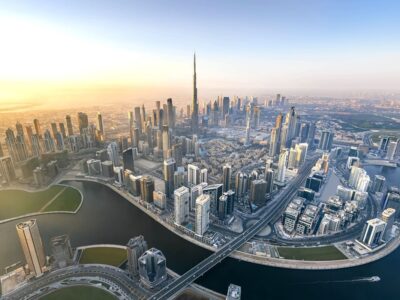Emergency platform evacuation is thankfully a rare event in the offshore oil and gas sector.
However, the few incidents that have occurred have demonstrated just how key the role of proper evacuation is in preventing loss of life.
Operators are required to have sufficient evacuation criteria in place including training in procedures, and specific equipment to facilitate safe emergency departure from the platform.
They must also have access to support vessels and the necessary infrastructure to remove employees away from the site to safety.
Most evacuations occur because of bad weather, such as those in the Gulf of Mexico, which is prone to hurricanes.
With today’s meteorological forecasts now able to predict weather patterns very accurately, evacuations from these platforms are normally routine.
However, loss of life more commonly arises in other situations where fires or explosions cause an unexpected, sudden need for evacuation.
There have been several platform accidents, which caused a large number of fatalities, including Frigg DP1, Bravo Ekofisk, Alexander Kielland, Piper Alpha, West Gamma and Sleipner A.
Piper Alpha was the world’s most serious offshore oil disaster when in July 1988, following a fire and explosion, 167 lost their lives.
It has been alleged that insufficient evacuation procedures may have contributed to the high death toll.
According to the official UK government’s investigation into the incident, a more effective evacuation could have been carried out had better training procedures been in place.
The routes to the lifeboats were blocked and the public address system failed.
Most of those who survived did so by jumping into the sea, contrary to the training they had been given.
A full evacuation drill had not been carried out in more than three years.
The £1 billion public inquiry carried out into the disaster resulted in all North Sea operators changing the way they ran their offshore installations and management systems, and made specific recommendations regarding improvements to evacuation and escape systems.
These included the requirements that: more than one route to helicopters and lifeboats must be present at any given time; luminescent strips and heat shielding should provide visibility in smoke and protection from flames; and secondary escapes such as ropes, ladders, and nets must be available as backup.
Furthermore, offshore installation managers were required to meet competency criteria, and complete training to take control in crises while platform workers have to undergo training exercises on lifeboat stations, fire-fighting, breathing apparatus, and first aid.
According to guidelines published by the UK Offshore Operators’ Association (UKOOA): “The location range and number of escape arrangements provided should be related to the number and distribution of personnel on the installation, and the circumstances in which these arrangements may be required.”
Training is vital—oil platform workers need to be educated in safety procedures ideally to help prevent accidents in the first place; and in evacuation procedures from the platform and sea survival.
Several companies offer these kinds of courses including the Abu Dhabi-based Emirates Technical & Safety Development Centre (ETSDC).
Based in Mussafah, ETSDC was established in 1994 as a subsidiary of the Mutawa Group.
It provides training services for offshore operations under a strategic alliance with the UK-based Nutec Global Safety Group (Nutec), an international risk management organisation.
According to ETSDC spokesman Munir Al-Hiloo its courses are approved by several companies including Adnoc, Zazco, Shell, Schlumberger and Halliburton.
Nutec itself has devised an advanced ‘e-learning’ system that involves practice on a PC with virtual reality technology.
Today, computer technology is commonly used to help devise evacuation procedures.
Norway’s Lilleaker Consulting has created the Advanced Safety Analysis Package (ASAP), which calculates the risk related to incidents on oil and gas installations.
This system comprises a design package, physical and statistical models along with a design interface. The escape and evacuation system is created in a three-dimensional way.
For each escape route—escape ways, stairs, modules and exits—the walking speed and time of evacuation or time to muster is defined based on differing fire and explosion ratings.
The ASAP finds the optimum escape network with escape and evacuation time based on the above data and different fire scenarios that could block or damage escape routes.
Means of escape from platforms include davit-launched life rafts and controlled descent to the sea, such as chute systems and ladders.
Another result of Piper Alpha was the requirement that each platform must have a lifeboat capacity to accommodate 150% of people on the installation at any given time.
Since then, free-falling lifeboats have also been developed to more quickly and safely evacuate platform personnel.
In July, Norway’s Statoil said it had recently completed a project on its lifeboats, which may result in a new international standard.
The project was initiated after weaknesses were discovered in 2005 on six free-fall lifeboats on the Kristin platform in the Norwegian Sea and the Veslefrikk B platform in the North Sea.
According to the company’s senior engineer, Alf Morten Sirevaag: ”The current international standard is too general.
The past year’s pioneering work is expected to drive a new standard. Neither the buyers, nor the sellers, have been aware of the dynamics of the forces exerted during a free fall. Weaknesses have been discovered on several boat types.”
Statoil carried out almost 5,000 tests, both in calm waters and under different wave conditions.
“Based on knowledge gained through the project we have now established much stricter requirements for new lifeboat purchases,” Sirevaag said, adding: ”New specifications will be developed.”
There are a total of 211 free-fall lifeboats on the Norwegian continental shelf, half of which are located on Statoil-operated installations.
Chute-based evacuation systems are now a common site in the North Sea.
Norway-based Viking Life-Saving Equipment is currently adapting its chutes for use in Arctic and sub-tropical waters.
According to the company’s technical manager Lars Bjoland: “Until our prototype was introduced, the offshore market only had access to much higher-risk systems such as davit-launched life rafts and lifeboats.
The drop-release Viking chute, with its stabilising weight, provided a solution to the increased need for safety.
Due to the weighted-down bottom end, the chute does not need a fixed point of anchorage.
The stability is not affected even by strong winds.”
Once evacuated, a whole new set of procedures come into play which are just as important as those that get people safely off the platform.
This was highlighted only too clearly in an incident in 1984, when 40 people who had managed to escape a fire on the Enchova offshore oil platform, 60 miles off the Brazilian coast, drowned when their rescue boat carrying them to safety capsized in heavy seas.
As a result of Piper Alpha, all platforms in the North Sea are required to have at least one standby vessel within five miles of each installation available at any given time to accommodate all platform personnel.
Viking Offshore Services—based in Aberdeen—runs a fleet of rescue vessels in the North Sea.
According to operations director, Graham Wood: “There are only a few companies that provide these kinds of services [in the UK North Sea]; you also have to ensure you provide training and competency to meet various standards.”
In the UK, these standards are mandated by the Marine and Coastguard Agency, which is currently conducting a series of ongoing trials, “to prove the ability to rescue people from the sea”, Wood says.
Several companies, including Wood’s, are members of the North Sea Emergency Response and Rescue Vehicle Association (ERRVA) which aims to promote the safety and development of rescue standby services.
Recent months have seen orders by several of its members for up to £130 million worth of new rescue vessels.
According to ERRVA’s chairman John Wilson: “There will always be a requirement for such vessels as long as manned installations remain the focus of offshore exploration and production activity—not least in emergency circumstances when weather conditions, for example, may preclude the deployment of other rescue services.
And as the infrastructure grows older, weather profiles continue to change and the risk of human error remains, it is critically important that rescue and recovery vessels respond.”
He added that the introduction of new vessels “is key to ensuring the sector is equipped to meet the needs of the offshore industry for many years to come, and to position members to exploit opportunities in other geographical markets as they arise.”







